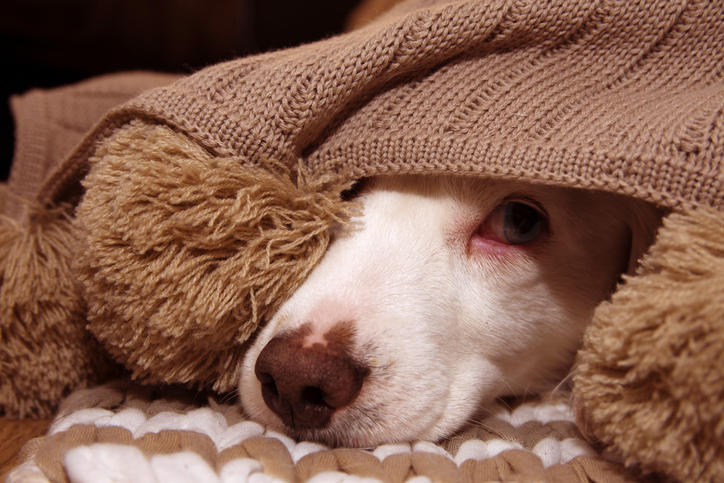
The Ranch Pet Resort and Spa‘s “Rover Reporter” went on a mission to answer the question: Do Dogs Experience Anxiety?
A simple Google search led to the answer that yes, dogs and other pets do experience anxiety, and they show it in ways we may or may not recognize.
Ways Dogs Show Anxiety
According to an article by the American Kennel Club, dogs experience anxiety in several ways. If your dog is showing signs of the following, it may be experiencing anxiety:
- Excessive panting, drooling, licking, barking, whining, or howling
- Urinating or defecating in the house (unrelated to potty training or incontinence)
- Aggressive behaviors
- Destroying property
- Digging
- Pacing about
- Appearing depressed
- Demonstrating repetitive or compulsive behaviors
- Restlessness
Why Do Dogs Get Anxiety?
Much like humans, dog experience anxiety under certain conditions or circumstances. Some anxiety behaviors can be recurring, and others can be constant.
Dogs are very adept at “reading” or understanding situations and people. If your dog senses that you are stressed, it can react to your feelings.
If a dog is in an uncomfortable or unfamiliar situation, such as going to the vet, traveling, or moving, it can also exhibit anxiety.
Sometimes sounds, noises, unfamiliar surroundings, objects, surfaces, other animals, or strangers can cause a dog to feel anxious.
Likewise, dogs who are separated from their owners, even for a brief period of time, can experience anxiety.
Anxiety is also common in older dogs whose cognitive functions are starting to decline.
How to Help an Anxious Dog
Every dog reacts differently to anxiety, and it’s important to monitor your dog’s reactions and health to determine if your dog has anxiety and if you need to seek treatment for anxiety.
The first action you might take is to visit your vet. Describe your dog’s behaviors and under what conditions your dog appears anxious.
Medical treatments, behavior training, socialization, crate training, exercising your dog, providing a nourishing diet, and removing your dog from stressful situations are just some of the ways you can ease the anxiety your dog is experiencing.
Anxiety Can be Normal in Dogs
If your dog is experiencing anxiety, it can be a perfectly normal and acceptable behavior.
This “Rover Reporter” noticed increasing anxiety in her older dog a few years ago. Separation anxiety, howling, restlessness, and excessive panting (when all weather extremes were normal) were the first signs that something was not quite right with my beloved pooch.
Medication didn’t seem to work on him, so we adapted to working from home, assuring him each time we left “we would be right back,” cuddling him, allowing him to sleep with us, changing his diet, and allowing him to be where we were.
He has since mellowed, except when we have company, at which point he wants to be where the action is, or he will cry and howl if separated.
Most importantly, we have come to accept our pooch has changing needs, not much different than ours, and with patience, education, understanding, and love, he has settled down a bit, and that makes us all less anxious.

